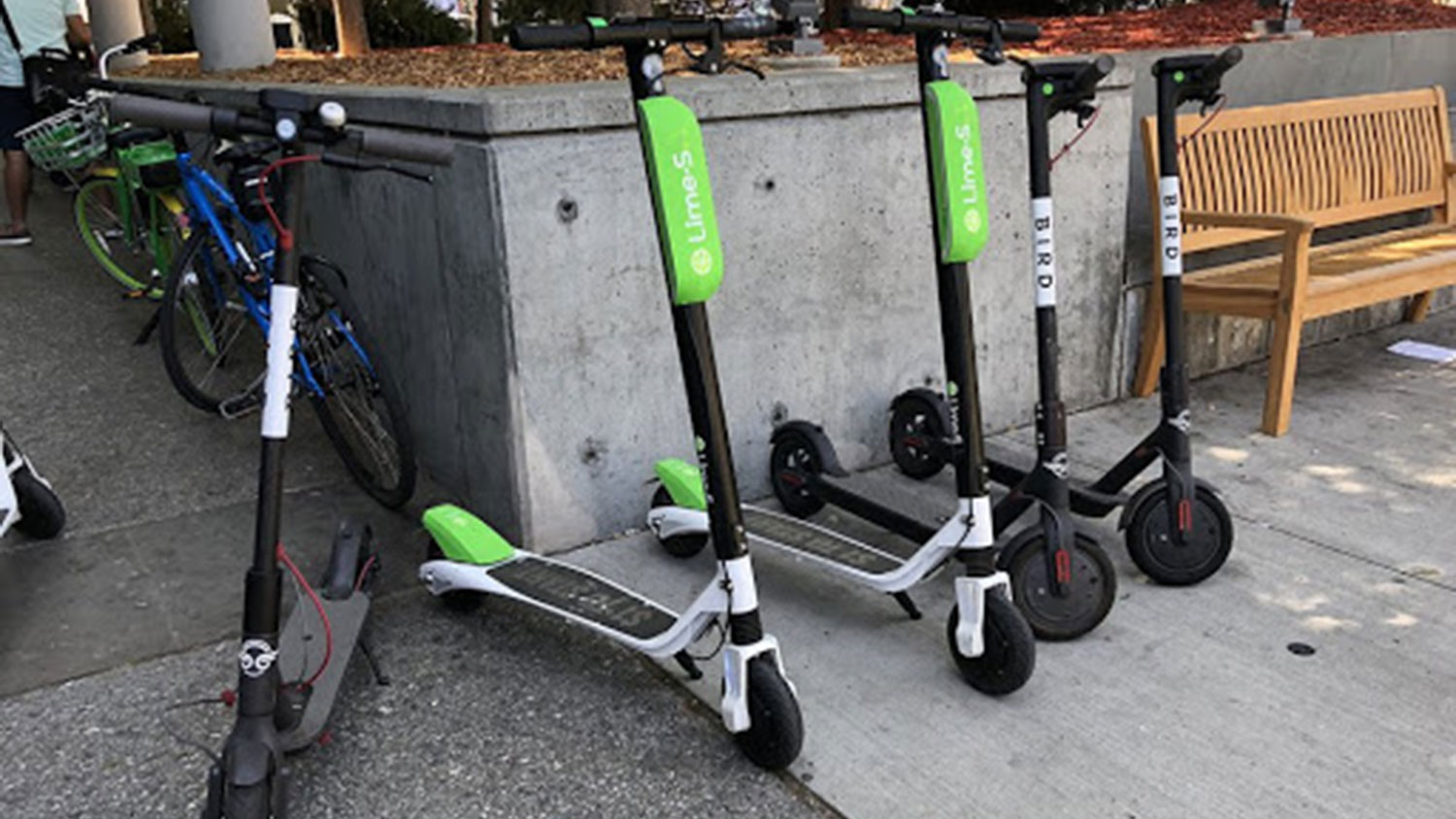
You’ve seen them zipping down streets, sidewalks, ramps and alleyways. You’ve heard their notable chime when somebody hops on. E-scooters, Birds, Limes — whatever you want to call them — electric scooters have taken U.S. cities by storm.
The green and black-clad scooters, which are now a multi-national, multi-million dollar industry, provide a means of transportation for anybody who is willing to download an app and pay a small fee. But as the popularity of scooters increases, so too do issues of scooter etiquette, safety and accessibility.
So what are the pros and cons of electric scooters? For students, the scooters provide a quick and cheap way to get to class, work and other activities. However, students aren’t sure where to operate the scooters. Nicole Daniels, a senior in psychology, says this about the scooters:
“They’re fast! And really fun… it’s tricky to tell where in the road you should be using on… I think they are safe to an extent, but if you slam on the brakes it could throw you off, so I think you need to be careful … I always use the sidewalk, mainly because I’d rather go slower than be in the street and possibly get hit by a car.”
At just 15 cents per mile — around $10 per hour — Bird and Lime scooters fulfill the student need for cheap and quick transportation around campus. While Wolfline buses run every 15 minutes, an e-scooter is practically always available for use. They are satisfying a need.
While scooters do fulfill some needs of those living in the city, some are saying the scooters have become a nuisance, and even a hazard, to those using pedestrian walkways. This month, a paraplegic woman from California filed a class action lawsuit against Bird scooters for discriminating against the disabled. Mia Labowitz, who uses a specially equipped wheelchair to get around, claims that Bird scooters take up public space on sidewalks, curb ramps and pedestrian crossings, especially when left scattered about and lying on their sides.
Labowitz states that Bird exploits space for the sake of profit and at the expense of people with disabilities. Here at NC State, Director of the Disability Resource Office Mark Newmiller also expresses some concern over the scooters. When asked about the electric scooters, Newmiller stated:
“The biggest concern I have is the placement of e-scooters and bikes after students are finished riding them. Generally, I find some blocking sidewalks or other access routes that would prohibit someone who travels by wheelchair or someone unable to physically move it from getting to their destination.”
While we can’t do much about what happens in California, we can take practical steps here at NC State to ensure that scooters don’t become an accessibility hazard (or having to ban them from campus as UNC-Chapel Hill has done.)
Newmiller advises students using the scooters to practice the following scooter etiquette guidelines:
- Always be aware of your surroundings.
- Use bike lanes.
- Follow the established rules of the road.
- Do not block pedestrian walkways once finished with a bike or scooter.
Whichever side of the scooter debate you fall in, please be aware of safe and inclusive practices if you use one. Make space, drive safely and park your scooter courteously. Avoid blocking pedestrian crossings or accessibility ramps when. What is a joyride for one can be a major hindrance for another.
Leah Block is a senior majoring in communication with a minor in sociology and a communications intern in the Office for Institutional Equity and Diversity.